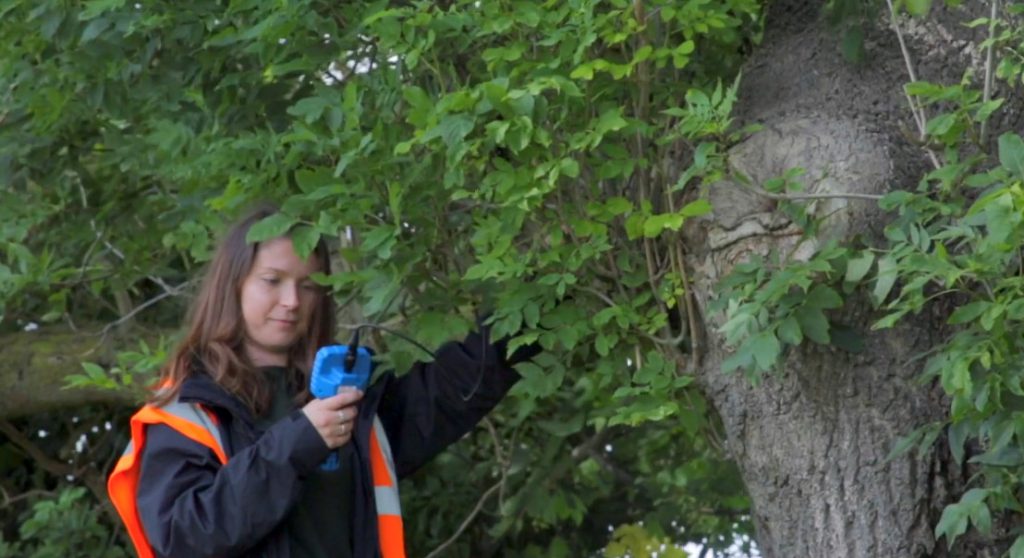Current Cambridgeshire Biodiversity
A mix of undeveloped natural landscapes and populated urban areas, Cambridgeshire has a welcome balance of features throughout the county. Other than the famous and iconic University of Cambridge, many of the tourist attractions are natural or outdoors, such as Ferry Meadows Country Park, Railworld Wildlife Haven, Paxton Pits Nature Reserve, the River Cam, and Wicken Fen National Nature Reserve.
European protected species are located across England, with many species of bats emerging as one of the most common in circulation, and both bats and bat roost sites pose an equally frequent obstruction to planning projects. Areas such as Cambridgeshire that present a combination of urban and rural areas are particularly desirable to bat species as they have the choice of natural trees or man-made infrastructure.
Prior to gaining planning permission for a land development project from your local planning authority, you would need evidence that a bat survey has been undertaken, allowing an ecologist to develop suitable next steps that will ensure the safety of inhabiting bats in the vicinity.
Bat Species Across Cambridgeshire
Currently, 12 out of 18 species of bat in the UK are present in Cambridgeshire. Bat species in the region consist of barbastelle bats (barbastella barbastellus), Brandt’s bats (myotis brandtii), brown long-eared bats (plecotus auritus), common pipistrelle bats (pipistrellus pipistrellus), Daubenton’s bats (myotis daubentonii), Leisler’s bats (nyctalus leisleri), Nathusius’ pipistrelle bats (pipistrellus nathusii), Natterer’s bats (myotis nattereri), noctule bats (nyctalus noctula), serotine bats (eptesicus serotinus), soprano pipistrelle bats (sipistrellus pygmaeus), and whiskered bats (myotis mystacinus).
Protection Measures for Nearby Bats
As well as coverage over the entire East of England and the rest of the country from the Bat Conservation Trust (BCT), bats in Cambridgeshire are protected by the Cambridgeshire Bat Group. An official partner group of the BCT, the Cambridgeshire Bat Group conduct bat research, hold talks and events, and offer education to members of the public, all solely within the county of Cambridgeshire.
The Cambridgeshire Bat Group also offer care to bats that were found injured, often following cat attacks. Every bat carer operates within the same rules – the three Rs of rescue, rehab and release. Through following these guidelines, bats will be given the necessary care before safely returning to their natural habitats in the wild.
Organise a Site Visit
The requirement for a bat survey could be the result of a local council’s request, another form of ecological assessment, or following observations from yourself or professionals on your site that confirmed or indicated the presence of bat species.
If several ecological features may be on the site such as a number of protected animal species and invasive or valuable plants, a Preliminary Ecological Appraisal (PEA) would be undertaken as the first stage in the bat survey process. If it appears that bats are the only ecological feature on the site, skipping straight to a Preliminary Roost Assessment (PRA) would be the most suitable course of action.
A PRA consists of a desk study to collect any relevant information and a physical inspection to assess the development site. Evidence of bats on a development site from bat surveys could include bat roosts or carcasses, the remains of prey, bat droppings or sections of infrastructure that could act as suitable roosting locations. Between the results of the PRA and the development plans, the ecologist will determine whether or not roosting bats are present and if the project would be likely to disturb them in any way.
If there are no bats present or the development won’t impact the bats at all, the bat survey report will reflect this, urging the local planning authority to grant planning consent. If, however, there are signs of bats on the site and the development would be likely to disturb or possibly even harm them, the ecological surveyor would recommend a Bat Emergence and Re-Entry Survey (BERS).
Sometimes better known as a Bat Activity Survey or Bat Emergence Survey, a BERS focuses on calculating population numbers and bat species on a site by monitoring entry and exit points over multiple visits. Unlike a PRA, a BERS assessment must be held outside of hibernation between the optimal time of May and September.
A Bat Emergence Survey usually involves several ecological consultants in order to gain coverage over different areas on the site, and upon completion, the main ecologist in charge of the assessment will develop a bat survey report that details their findings and effective recommendations that will allow the project to move forwards.
Speak to Arbtech About Bats On Your Site
With ecologists across the country, Arbtech is perfectly structured for arranging bat surveys regardless of your location. Each of our ecological consultants has the required licensing from Natural England and the Chartered Institute of Ecology and Environmental Management (CIEEM), as well as experience in supporting development proposals in a variety of settings and involving a number of different building types.
Whether you are staging a development in Cambridgeshire, another part of the East of England, or an entirely separate section of England, there could be any number of bat roost sites present, and even if a single bat roost is on the development site, it will cause issues in your planning process, obstruct access to the development site, and prevent development work from moving forwards before the necessary bat surveys are undertaken.
Simply get in touch and provide us with detailed information about your development site and project. We can then book in a bat survey and assign an ecological consultant in the nearby area to assist with your development needs by performing an internal and external inspection. Knowledge of the local area and other European protected species also means that they can help with matching the expectations of the local authorities and provide further ecology surveys, such as for great crested newts and badgers.


